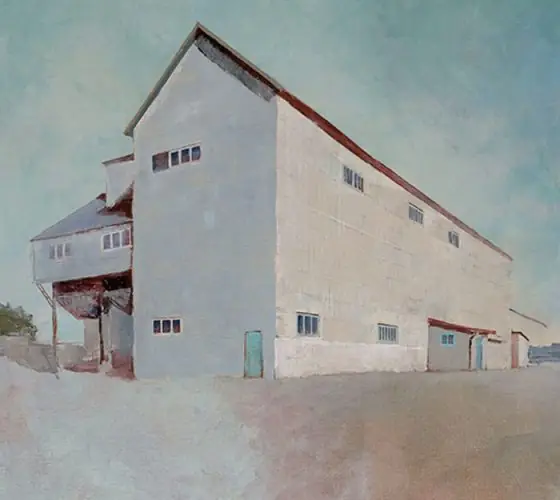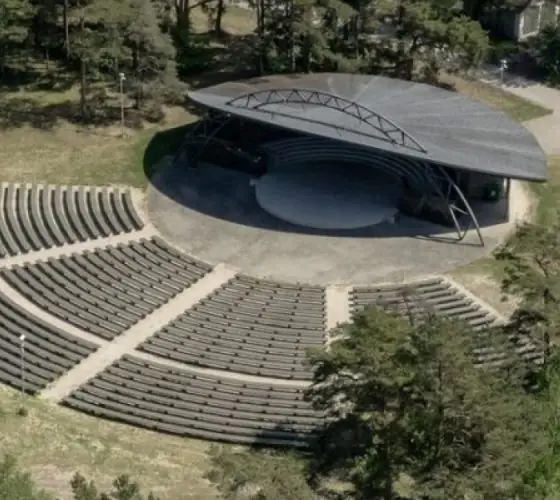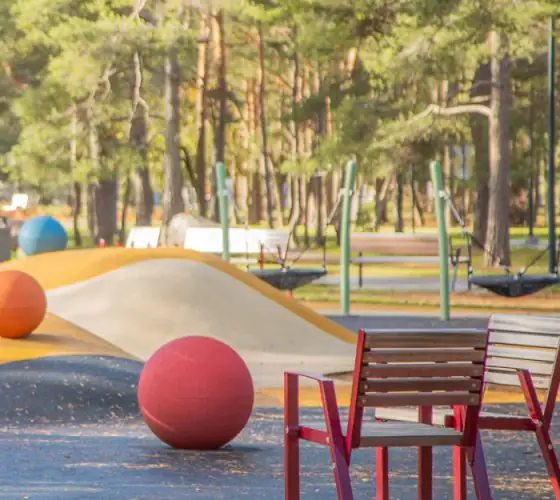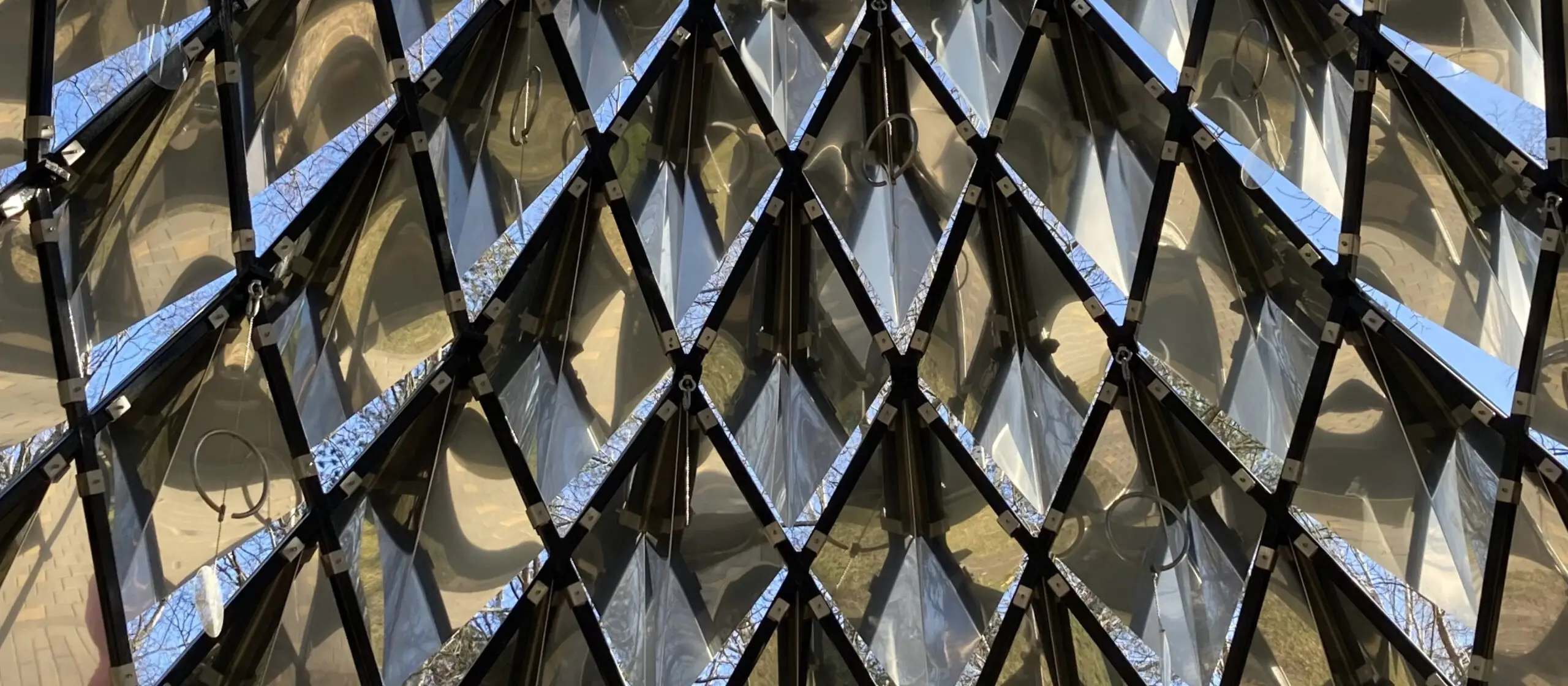
Keep the recommendations, where to go and what not to miss, if you can not swim already, and with a turtle and with the seagulls on the bench you have already taken a picture and the globe, too, repeatedly twirled.
Jūrmala City Museum
The museum exposition is small and not at all tiresome: just what you need on vacation. In a fascinating form with elements of multimedia it tells about the formation and history of the resort, about life in the coastal settlements from the XVIII century to the present time.
Here you can see unusual items of resort life of those times: for example, a special bathing suit or ancient bathing suits, and learn how children’s recreation was organized in Jurmala in the past.
A separate multimedia installation is dedicated to the work of Jurmala’s main poet Rainis (Janis Plieksans). In addition to the main exhibition, the museum constantly hosts temporary exhibitions of contemporary Latvian artists and photographers, as well as interesting master classes for children. As almost everywhere else in Jurmala, entrance to the city museum is free.
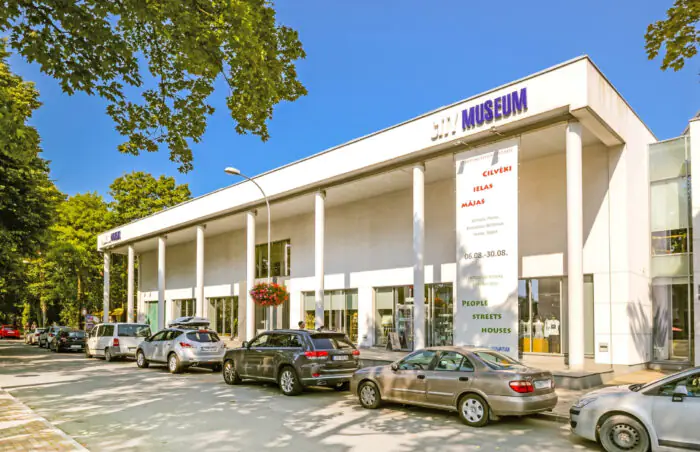
visitjurmala.lv
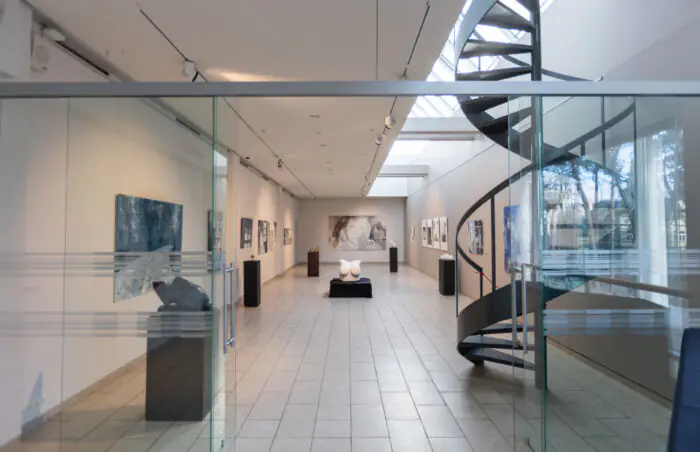
visitjurmala.lv
Jūrmala Open-Air Museum
A visit to the Ethnographic Museum should be combined with a long walk through the largest and most beautiful natural area of Jurmala—Ragakāpa Nature Park. In fact, the museum is located there. Here you can find out more about how fishermen lived and how they caught and smoked fish (and if you are very lucky, you can even taste it), get acquainted with their everyday life, visit their homes.
The museum has a solid collection of fishing boats, anchors, special tools for twisting ropes, and often organizes interesting meetings for children and adults. There’s a separate picnic area on the grounds, so the experience of the day will be as complete as possible.
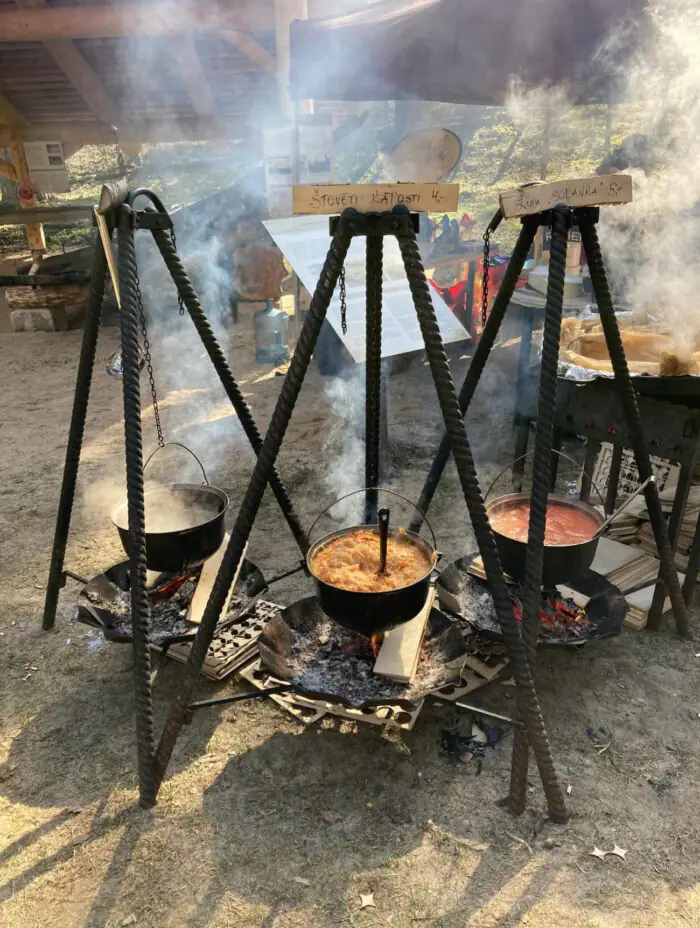
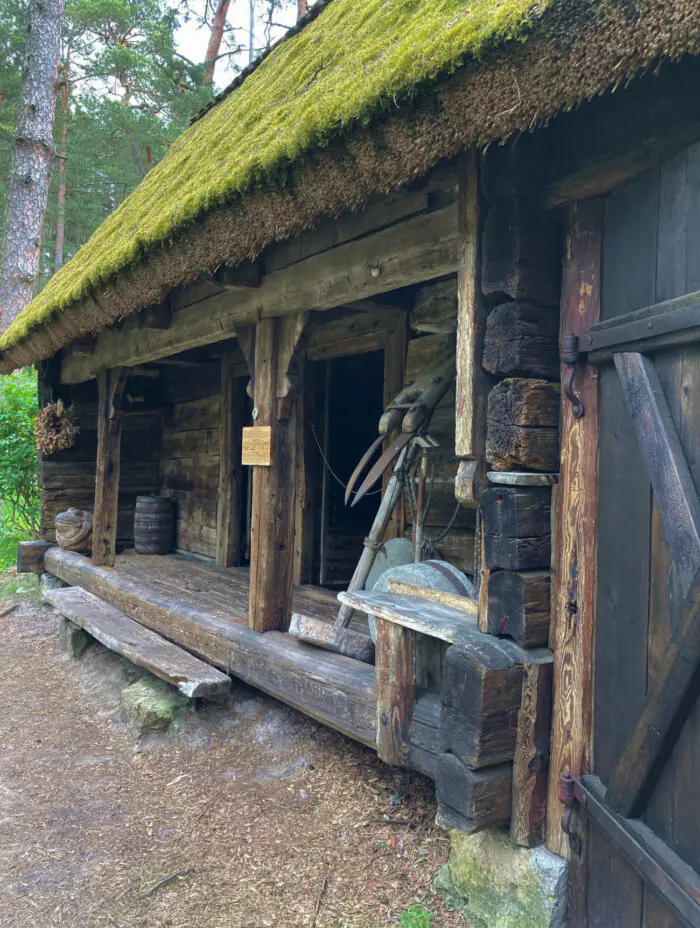
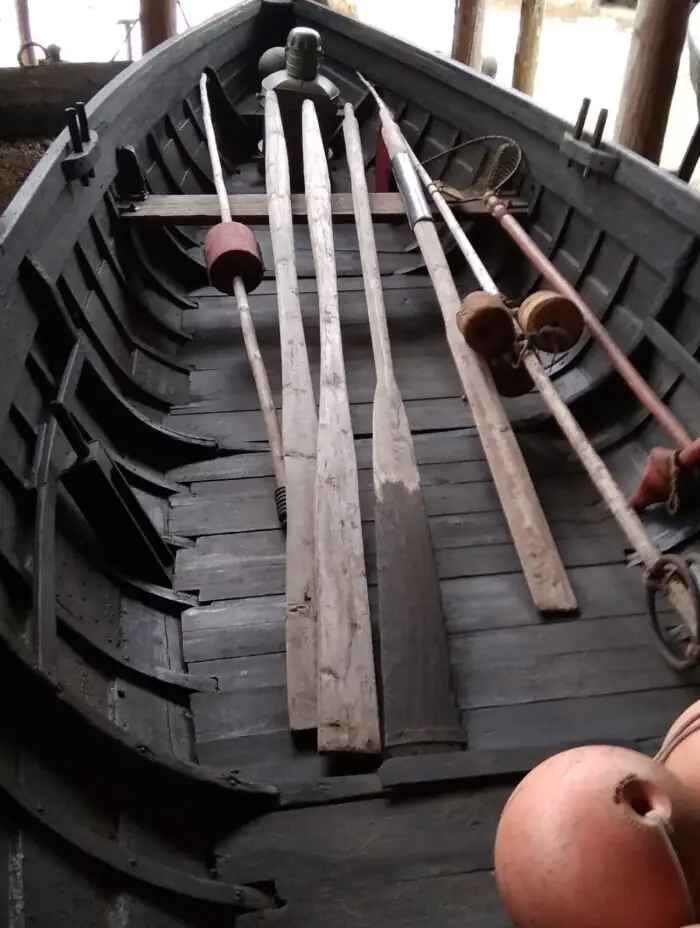
Bulduri Exhibition House
The small exhibition hall is located in a historical wooden house built in 1920, so it is worth a visit if only to get acquainted with the typical for Jurmala dacha development of the late XIX–early XX centuries, with its attractive turrets and typical small glazing.
The first floor is devoted to various temporary exhibitions, and on the second floor you can visit the studio of the artist Valdis Busch, who lived and worked in this house for more than 30 years, and get acquainted with his work. Plein airs and other meetings are often held in the courtyard. Admission is also free.
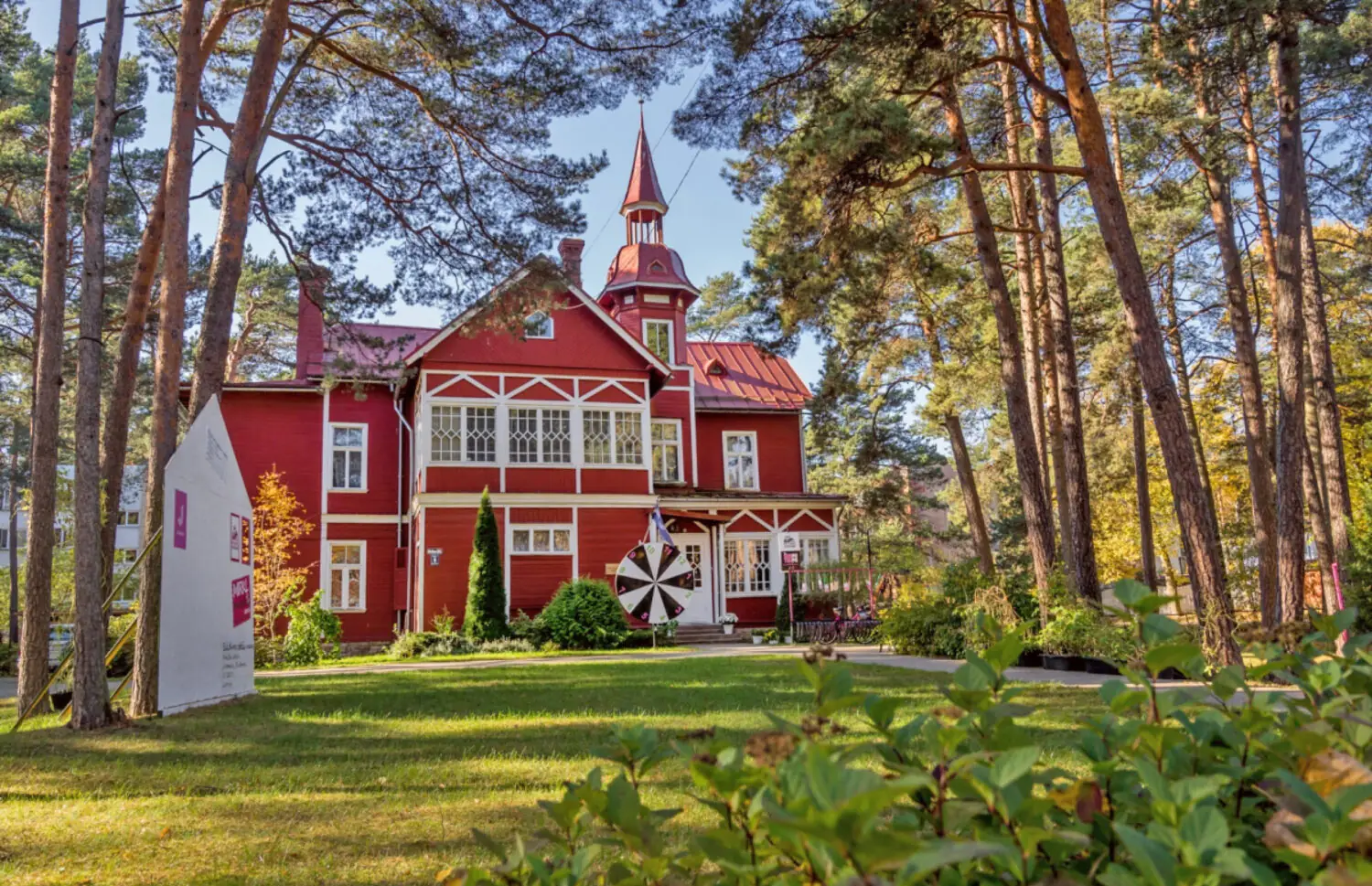
visitjurmala.lv
The Baltic Current sculpture
In 1920, an important intergovernmental conference was held at the hotel-casino in Bulduri, attended by delegations from Latvia, Estonia, Lithuania, Poland and Finland. To commemorate this event, in 2022, a three-meter sculpture of Kaspars Lidums “Baltic Current” was installed near the surviving part of the former hotel-casino building, right at the exit to the beach.
According to the author’s idea, it symbolizes the richness of the Baltic Sea and the unity of the countries of the Baltic region. A silver, cohesive school of 680 fish, resembling a gull wing at the same time, plays spectacularly in the sun like splashes of water, so that the new object quickly became one of the most popular spots for selfies along the entire coast.
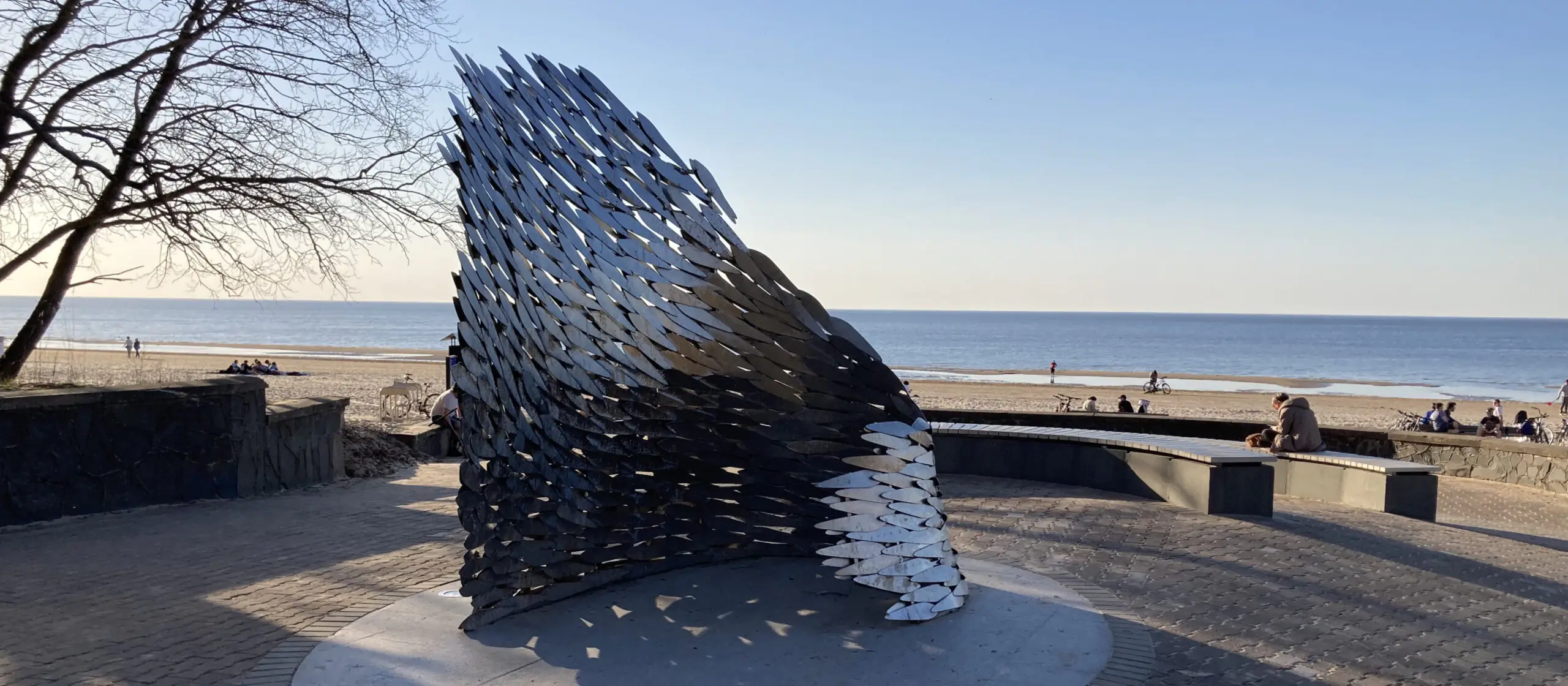
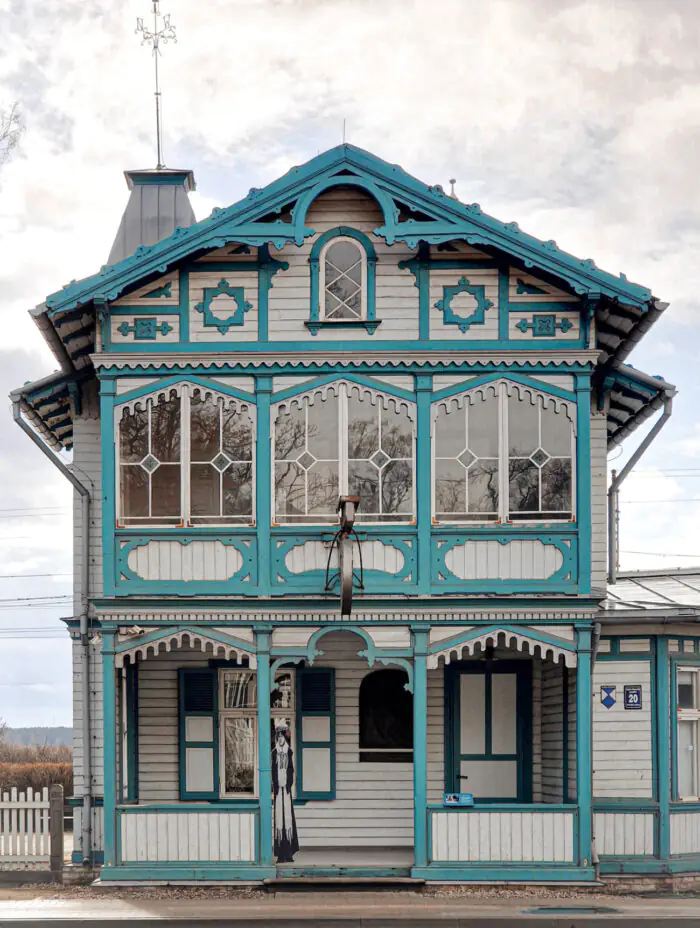
facebook.com/aspazijas.maja
Aspazija’s House
Another monument of wooden architecture in Jurmala is the house of Latvian poetess, translator and playwright Aspazija, wife of Jan Rainis, which was built in 1903.
Aspazija, or rather Elsa Rosenberg-Pliekshane, spent the last years of her life there from 1933 to 1943. The museum not only preserves the unique atmosphere and household items of the first half of the XX century, which belonged to the famous hostess, but also carries out active educational work, organizing concerts, poetry readings, lectures. Admission is also free.
If you want to continue traveling back in time, you can go to the dunes and admire the sea sunset with the poetess herself and her cat—a human-sized figure made by local sculptor Olga Shilova (Akas iela 1). Or visit Aspazija and Rainis’ cottage in Māori (Pliekšāna iela 5/7).
Dubulti Art Station
It is a unique situation when an active railway station, an important architectural monument of national importance, simultaneously acts as a full-fledged exhibition hall.
The amazing Wave Building, built in 1977 by Leningrad architect Igor Yavein, is ideal for all kinds of exhibitions of contemporary Latvian and international art of all genres, transforming at will into a safe shelter from the horrors of the world, or into a musical and architectural installation. The spectacular, but at the same time neutrally restrained architecture becomes a convenient field for a variety of experiments by artists.
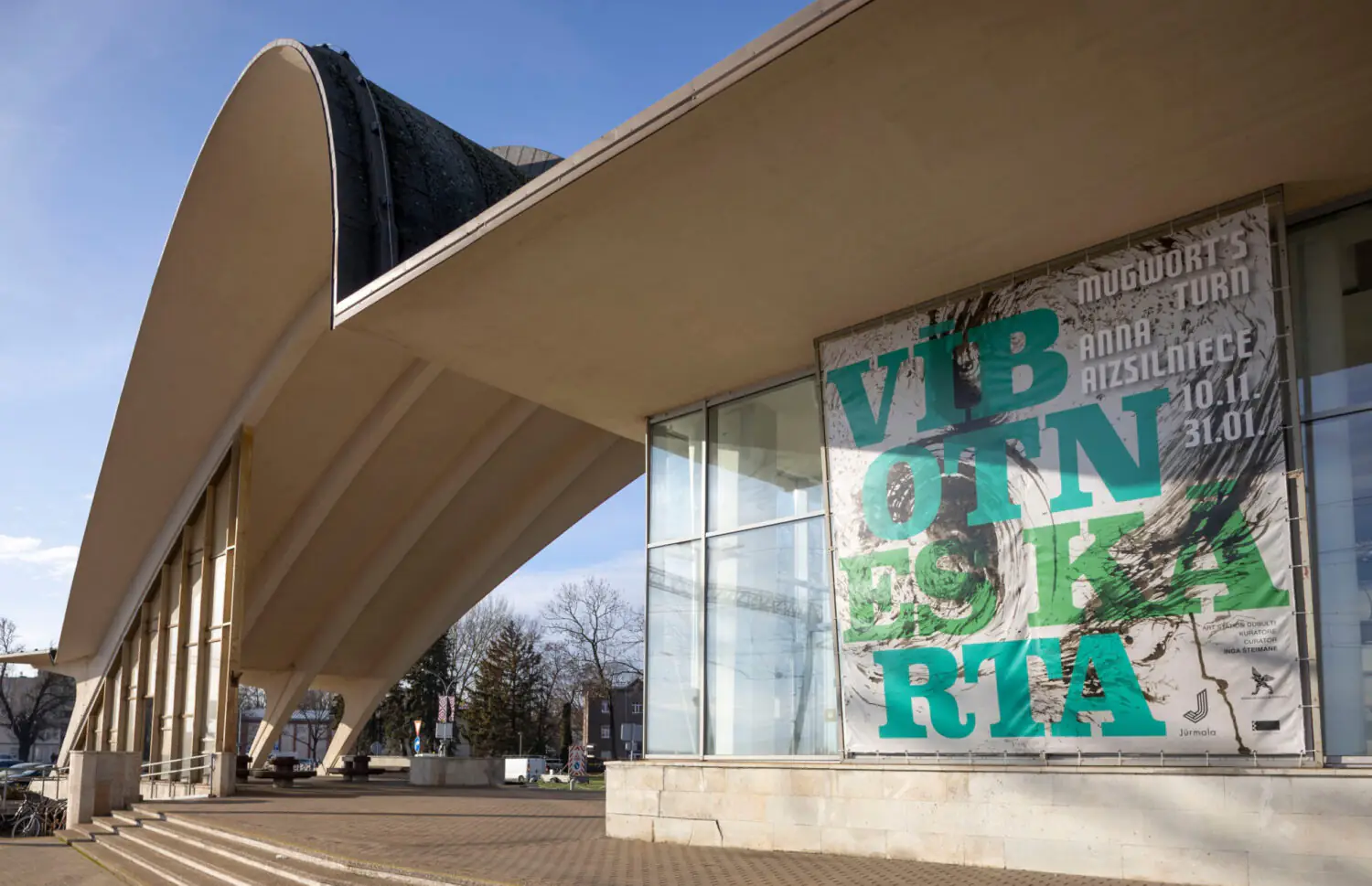
facebook.com/artstationdubulti
Music and poetry performances, workshops, and other events are often held here. So staying a little longer and taking the next train might be a great idea, especially since admission to the exhibition is free. But it is better to be prepared to be a part of the creative process of the authors of the exhibition.
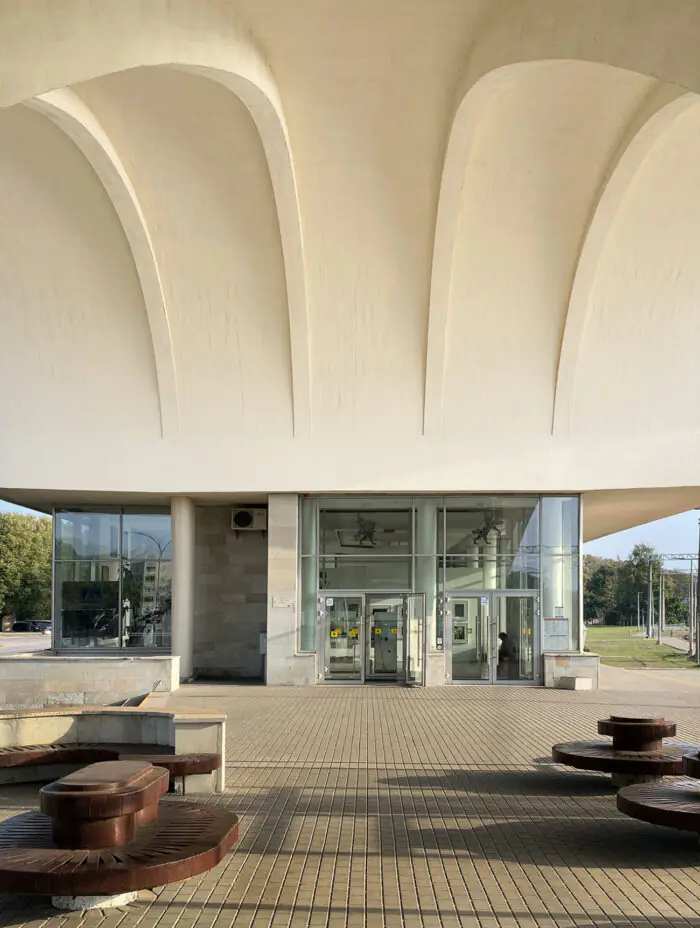
facebook.com/artstationdubulti
The Pine Pavilion
Latvian bureau Didzis Jaunzems Architecture specializes in small objects and scenography. For Jurmala, the architects proposed a seven-meter conical pavilion, which is sensitive to the events around it and any changes in the weather.
Its diamond-shaped mirrored scales, mounted on a steel frame, reflect trees, sky, clouds, grass, people. On a cloudy day they are cold and gray, but in the light of the setting sun they suddenly become fiery gold, and in snowy winter they magically sparkle like in a fairy tale. If you go inside, you can observe the surrounding world through the gaps, as if completely transformed in the prism of a kaleidoscope.
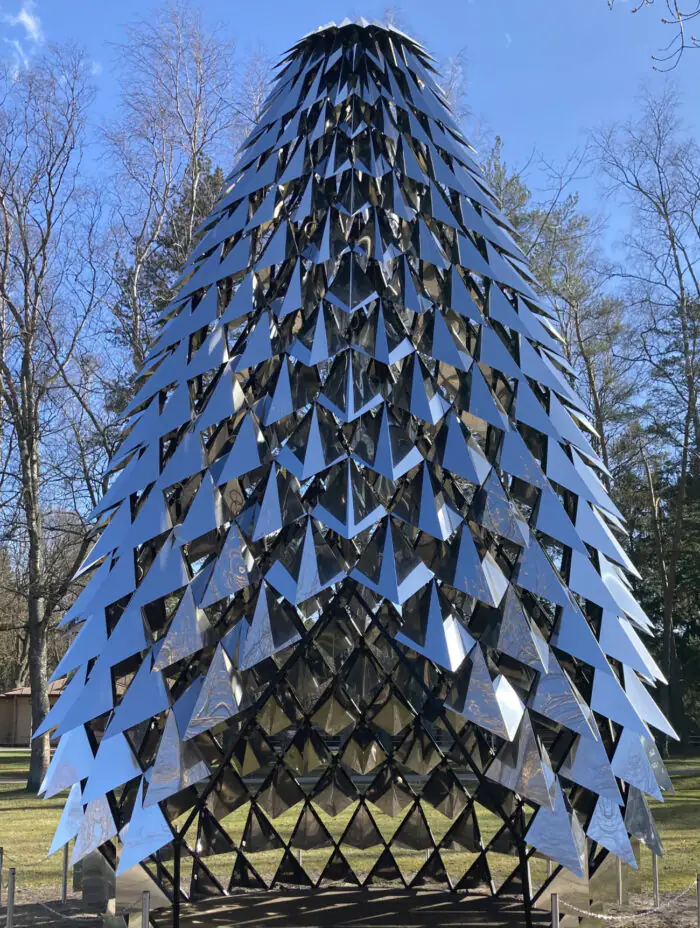
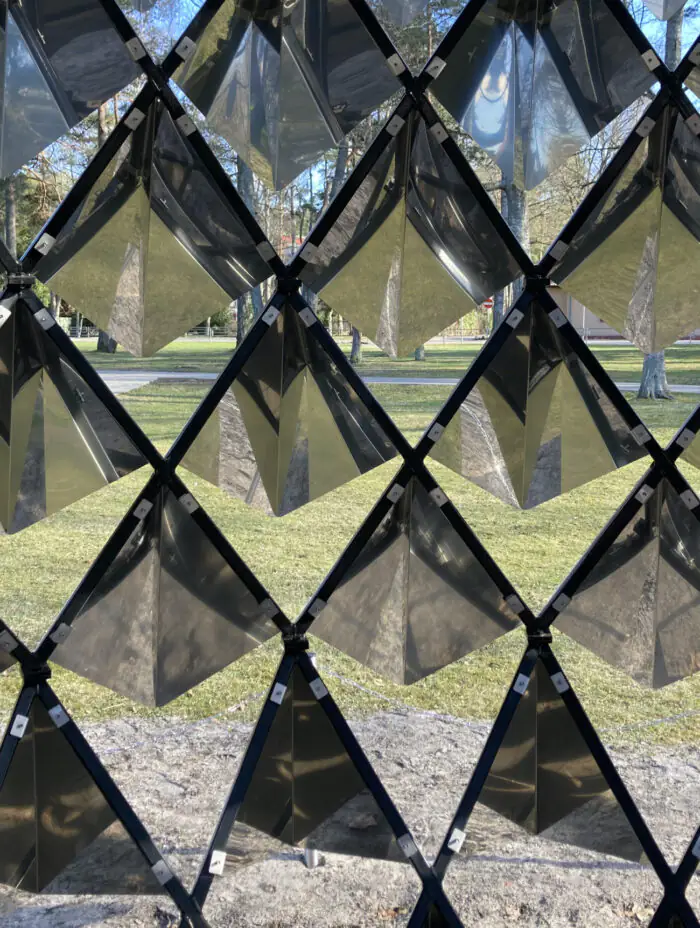
It’s easy to hide from the resort noise here, to admire endlessly the perfect geometry of the meditative patterns and to enjoy the subtle chime of the parts suspended inside the cone that move in the gusts of wind.
Sculpture of Rainis’ Pine Trees
In the dunes of the Pumpuri district, the most important Latvian poet Rainis loved to walk and work on new works. It was here that he dedicated his poem “Broken Pines” about fortitude and struggle.
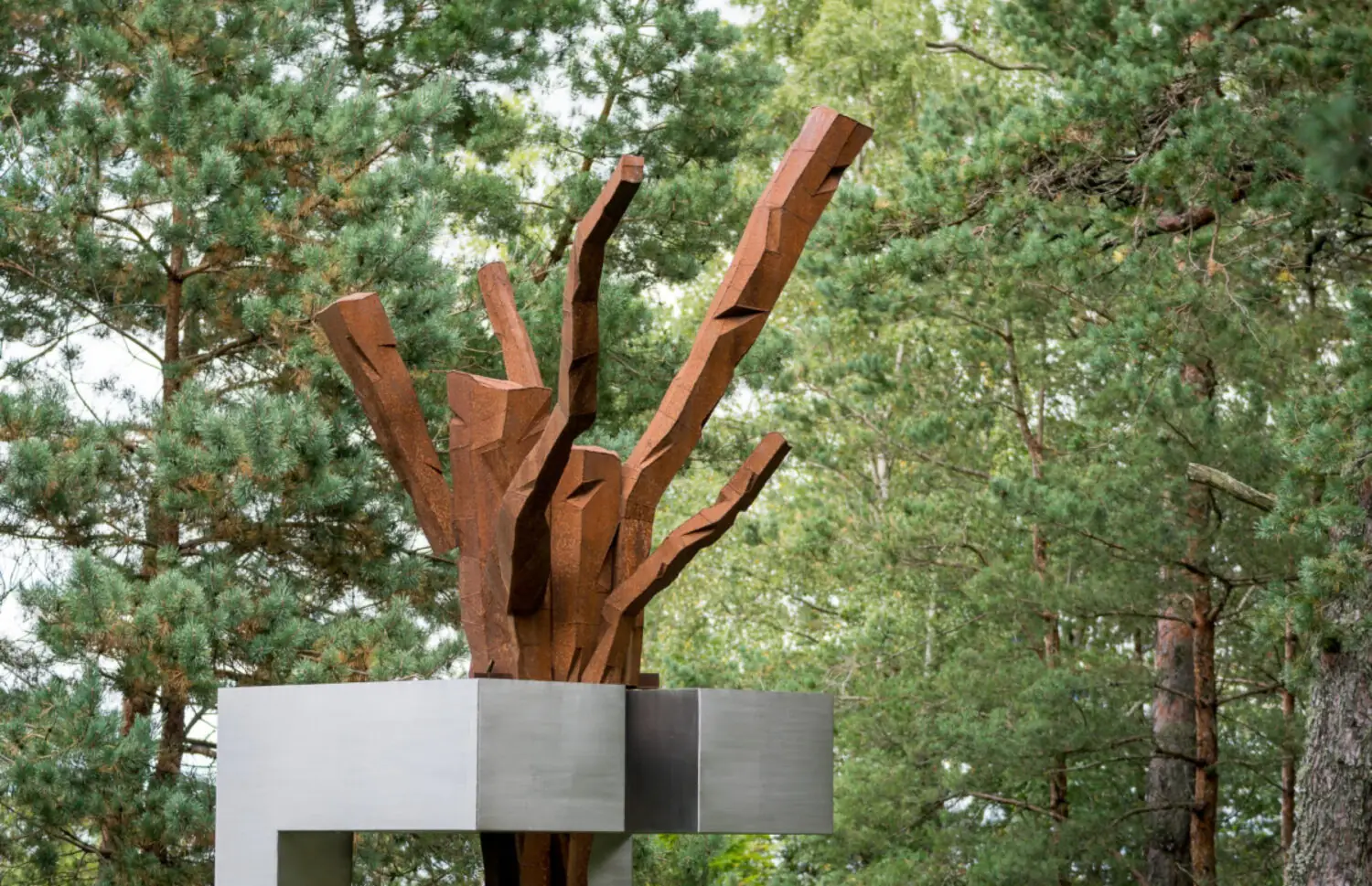
visitjurmala.lv
It is said that one of the pines that saw the legendary poet still remains. In memory of this, almost at the very exit to the sea, in 2014, a special environmental object was installed, which was called “Pine trees of Rainis”.
Its author, hereditary sculptor Kristaps Gulbis, created a full-size, as it were, old trunk, which is supported by a massive stainless steel structure. Its plates are engraved with quotations from Rainis’ diaries.



